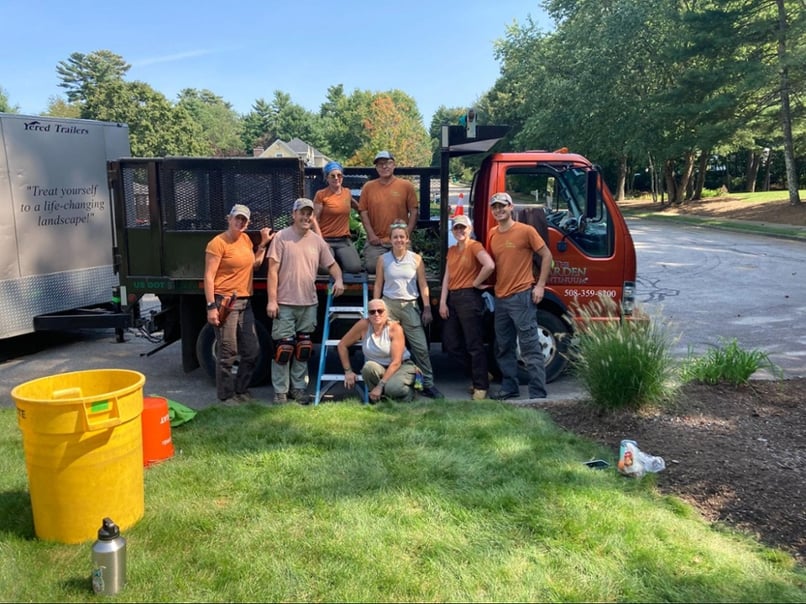6 Expert Tips to Fulfill Your Landscape Proposal Promise
Honest, hardworking landscape pros always have the best intentions at heart when they sell a project to a client. They sincerely want to deliver a top-quality project, on-time and on-budget, that will exceed client expectations and win more business.
The reality, however, is that no matter how skilled the professional is at the landscape tasks at hand, they often don’t have the business structure in place to adequately deliver on their promise and then fail even with their best intentions.
So how do you fix that? You start by implementing a structured, six-step process that helps ensure a clean, seamless, efficient delivery of services from sales, to on-site work, to invoicing. The result is fewer internal staff frustrations, happier clients, and more business.
Each step requires a little more effort and some staff instruction so that everyone is working on the same page and each step is successfully completed, but the result will be promises fulfilled to happy clients.

With that in mind, let’s take a closer look at each of the six steps:
1. Scheduling
If you’re currently trying to schedule on the morning of work, STOP. Efficient scheduling requires planning. If you’re scheduling the day you’re supposed to start a project, you’re not planning, you’re reacting.
Proper scheduling is a two-stage process:
1) “Look ahead” scheduling, which is more strategic and done both seasonally and monthly
2) Weekly scheduling, which is more tactical and done the week prior to starting work – this is mostly confirming what has already been scheduled during the “Look ahead” process and adjusting as needed. It’s crucial to communicate this schedule to both your staff and your clients. The purpose is to confirm the schedule and make sure all parties involved are aware of any changes brought about by weather or other events beyond your control. This enables you to be more flexible and develop a response and work-arounds within your scheduling system to minimize disruptions.
2. Mobilization
This is the act of getting your show on the road in the morning and it’s the first opportunity to have your work day seriously derailed if you can’t get rolling efficiently. Yes, it’s tough to get everyone moving in the early hours of the morning – things get forgotten, wires get crossed, staff starts off on the wrong foot. To avoid this, encourage your crew leads to review the next day’s scheduling and materials requirements the night before. This helps everyone begin thinking about the morning and what will be needed. The result? Everyone gets moving a little quicker and more efficiently with less confusion to make the most of the work day.
3. Staging
Like mobilization, this is a key step that often gets missed. Staging is the flow of materials, equipment, and labor force into a job. You need to understand the order of this flow to determine how these resources flow to the job – does everything need to be on-site at once, or can elements trickle in throughout the project? This raises another critical question: do you have the room to safely and comfortably stage workers, equipment, and plants to enable the smooth delivery of work as well as protect portions of the site that need to be left untouched? Paying proper attention to staging provides three significant benefits: you reduce frustration, time-wasting, and damage to the site that could cost you money.
4. Doing the job
If you’re a professional landscaper, you already know how to do the work. This is where most landscape companies focus all their time, effort, and skills. The steps we’re outlining here will enable you to do your “on-the-job” tasks more effectively, increase your and your staff’s skill sets, and focus even more on helping gardens thrive and your hardscapes stand the test of time. This is where you and your crew can really shine. We’ll discuss this more in another blog post.
5. Demobilization
This is the cleanup effort at the end of a project and can be a make-or-break factor in the client experience. If you implement the process we’re discussing here then your cleanup will, in turn, be easy to accomplish. Clients appreciate the kind of organization and professionalism that results in a clean and tidy site at the end of each day and the end of each project. But this final 10 percent of a job is also where some landscape companies drop the ball. At the end of the day, they’re focused more on throwing stuff in the truck and getting out – moving on to their next activity without considering how the client will feel about being left with a messy site that diminishes the good work done. We call this the “Fire Drill Exit”. Don’t let this be you. Stay focused a little longer, do a thorough site clean-up, and leave the client with a warm, fuzzy feeling about your company and the money they’re investing with you.
6. Reporting
This may be last in the list of steps here, but it really affects the entire process – from the start of a project to the delivery and invoicing. It begins when you inform the client when you will be on-site and working. It’s effective communication with your clientele, vendors, and staff. Good reporting is central to how you ensure you’re doing a good job and you’re earning money. It’s committing to paper what you’re going to do, when and how you’re doing it, and when it’s done. It’s close tracking of all materials, products & plants used by keeping all sales slips, receipts and data tracking up to date - whether done digitally or on paper. Good reporting is tracking the project from start to finish to ensure that nothing is missed and nothing is left un-billed. If the client has a question, you have the data to answer any questions quickly, accurately, and professionally.
In a word, get organized.
I’m hoping that you will read this post several times because there is a lot here and it can truly help you transform how you operate on a daily, weekly, and monthly basis. If there’s one thing you take away from this, let it be the importance of being organized in everything you do.
Me? I have big, 4’x6’ monthly scheduling boards. There are magnets for every employee, truck, and resource. By putting up scheduling like this, every single employee from the office manager to the workers in the field has the opportunity to look at and understand the plan. Each employee can comment on it. We share the burden of planning with every employee so they can have input. During a recent manager’s meeting, every employee commented positively on the boards, saying that they really work.
Now don’t get me wrong - organizing a landscape business is not all rainbows and unicorns. If you are trying to implement change, especially in the daily processes, you may get pushback from some team members. You may even lose some. I will tell you from experience, this does and will happen. There will always be the person who doesn’t want order, they thrive on chaos and the drama that comes with it.
The important point here is that you, as the owner, need to stand your ground. It’s okay for people to disagree and decide to move on. It doesn’t make them bad people, simply not the right fit. This shakeout has proven to be an amazing growth tool for The Garden Continuum.
Believe me when I say this kind of organization will fundamentally change your business and your culture in a good way. You will look back a year from now and wonder how you ever operated differently.
Landscape Business Owners Survival Guide




